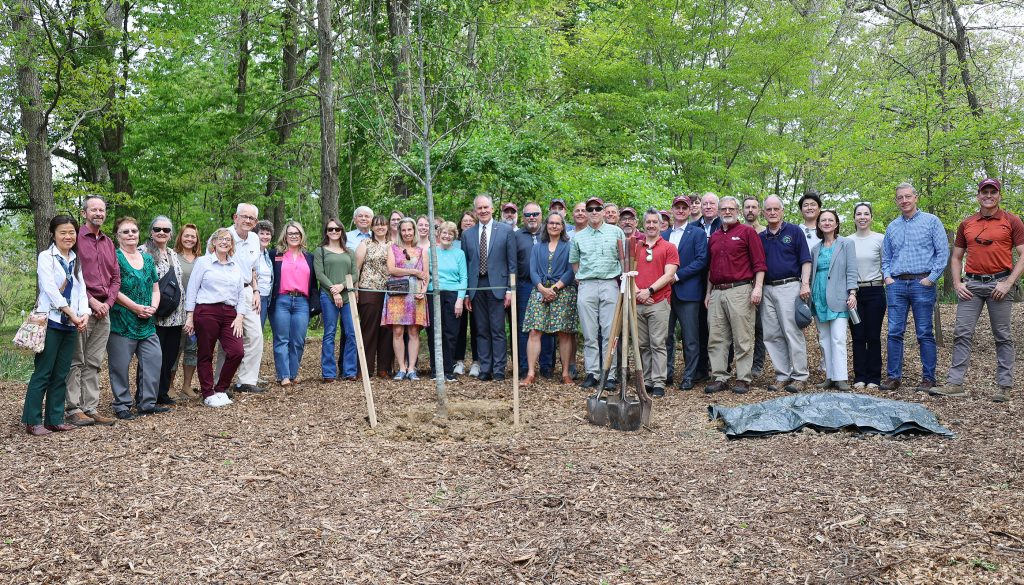
College of Natural Resources and Environment celebrates a century of forestry education
How did your country report this? Share your view in the comments.
Diverging Reports Breakdown
College of Natural Resources and Environment celebrates a century of forestry education
The College of Natural Resources and Environment marked the 100th anniversary of forestry education at Virginia Tech. What began as a single course in 1925 taught by pioneering professor Wilbur O’Byrne has grown into one of the nation’s top programs in natural resources and environmental conservation. In 1959, forestry and wildlife sciences separated from the Department of Biology to form a new academic unit focused on the conservation of both forest landscapes and the species that inhabit them. Within a decade, enrollment grew from just 66 undergraduate and five graduate students to more than 340 undergraduate and 50 graduate students.
Virginia’s forests were nearly depleted by the end of the 19th century. Widespread logging to supply fuel for iron furnaces and steam generators in the northeastern United States and the United Kingdom left the landscape bare. Recognizing the urgent need for sustainable forest management, Virginia established an agricultural research station in Blacksburg in 1886, laying the groundwork for what would become the university’s forestry program.
The first forestry course appeared in the 1902 catalog for what was then Virginia Agricultural and Mechanical College and Polytechnic Institute, offering instruction in the classification and conservation of native trees. But it wasn’t until 1925, with the hiring of O’Byrne, that a dedicated forestry curriculum took root.
In 1938, the university began offering a Bachelor of Science in conservation and forestry, establishing a formal path for students interested in sustainable land management.
“For more than 100 years, Virginia Tech’s forestry education, research, and outreach have supported generations of landowners and businesses across Virginia and beyond,” said retiring Dean Paul Winistorfer. “With a strong foundation, our forestry program is well positioned to support healthy, sustainable forest ecosystems that benefit all Virginians in the next century.”
Branching out
Just as a tree grows new branches, the forestry program expanded over the years to include wildlife conservation. In 1959, forestry and wildlife sciences separated from the Department of Biology to form a new academic unit focused on the conservation of both forest landscapes and the species that inhabit them.
Even as the program grew, the commonwealth continued funding Virginia students to attend North Carolina State University for forestry studies — until 1961, when John F. Hosner was named head of the department at Virginia Tech. Hosner helped establish Virginia Tech as a national leader in forestry education through faculty recruitment, industry partnerships, and student engagement.
By 1965, the program earned Society of American Foresters accreditation. Within a decade, enrollment grew from just 66 undergraduate and five graduate students to more than 340 undergraduate and 50 graduate students.
College of Natural Resources and Environment celebrates a century of forestry education
The College of Natural Resources and Environment marked the 100th anniversary of forestry education at Virginia Tech. What began as a single course in 1925 taught by pioneering professor Wilbur O’Byrne has grown into one of the nation’s top programs in natural resources and environmental conservation. In 1959, forestry and wildlife sciences separated from the Department of Biology to form a new academic unit focused on the conservation of both forest landscapes and the species that inhabit them. Within a decade, enrollment grew from just 66 undergraduate and five graduate students to more than 340 undergraduate and 50 graduate students.
Virginia’s forests were nearly depleted by the end of the 19th century. Widespread logging to supply fuel for iron furnaces and steam generators in the northeastern United States and the United Kingdom left the landscape bare. Recognizing the urgent need for sustainable forest management, Virginia established an agricultural research station in Blacksburg in 1886, laying the groundwork for what would become the university’s forestry program.
The first forestry course appeared in the 1902 catalog for what was then Virginia Agricultural and Mechanical College and Polytechnic Institute, offering instruction in the classification and conservation of native trees. But it wasn’t until 1925, with the hiring of O’Byrne, that a dedicated forestry curriculum took root.
In 1938, the university began offering a Bachelor of Science in conservation and forestry, establishing a formal path for students interested in sustainable land management.
“For more than 100 years, Virginia Tech’s forestry education, research, and outreach have supported generations of landowners and businesses across Virginia and beyond,” said retiring Dean Paul Winistorfer. “With a strong foundation, our forestry program is well positioned to support healthy, sustainable forest ecosystems that benefit all Virginians in the next century.”
Branching out
Just as a tree grows new branches, the forestry program expanded over the years to include wildlife conservation. In 1959, forestry and wildlife sciences separated from the Department of Biology to form a new academic unit focused on the conservation of both forest landscapes and the species that inhabit them.
Even as the program grew, the commonwealth continued funding Virginia students to attend North Carolina State University for forestry studies — until 1961, when John F. Hosner was named head of the department at Virginia Tech. Hosner helped establish Virginia Tech as a national leader in forestry education through faculty recruitment, industry partnerships, and student engagement.
By 1965, the program earned Society of American Foresters accreditation. Within a decade, enrollment grew from just 66 undergraduate and five graduate students to more than 340 undergraduate and 50 graduate students.
Source: https://news.vt.edu/content/news_vt_edu/en/articles/2025/06/cnre-century-of-forestry.html
